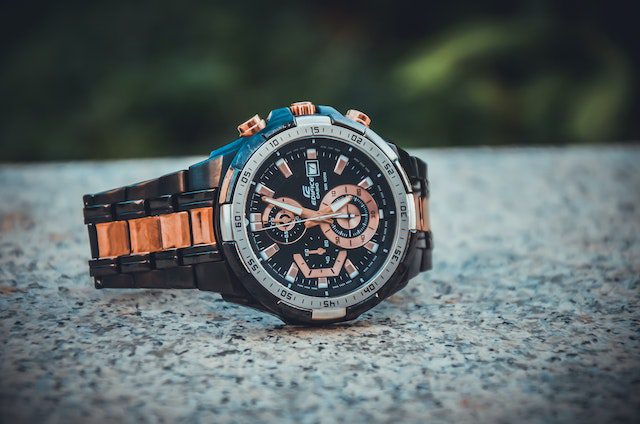It can be easy to underestimate the power of individual actions and products, despite the significant impact they can have. The Accutron watch provides an example of how one item can influence culture, sports, science, and fashion.
Bulova designed the Accutron watch and released the first model in 1960. At the time, Accutron was the first electronic watch in the world. Even as surrounding technology advances, Accutron continues to influence culture decades after its inception.
At the time of its creation, most mechanical watches were inaccurate, prone to failure, and difficult to repair. Accutron changed that, living up to its slogan of “Accuracy Through Electronics.” To demonstrate the watch’s workings, manufacturers developed the “open dial” demonstration model, which revealed its inner parts. This model became so popular that Bulova released a new model called the Spaceview, which maintained the same transparent presentation.
The Spaceview had a massive impact on culture. Many famous figures had their own Accutron watches, including Joe DiMaggio. DiMaggio’s partnership with Accutron was clearly massive; in 2013, his Accutron sold at an auction for $20,625. This staggering price reveals the importance of sports icons in marketing and product endorsements, as well as
Accutron’s lasting legacy.
Accutron also played a key role in science, primarily space exploration and high-speed flights. Its powerful accuracy lent itself well to these endeavors. Accutron had other beneficial qualities as well. It operated well at higher temperatures, withstanding temperatures of up to 210 degrees Fahrenheit. It was also resistant to disturbances such as shock and high g-forces. Accutron watches were present on 46 Apollo Missions and played various roles.
The watch’s influence continued on Earth as well. Its focus on transparency and inner workings became a new architectural style. The Pompidou Centre in Paris is a key example of this, as it was designed to look transparent from the outside. Over time, this style gained recognition, winning the Pritzker Architecture Prize in 2007.
Accutron’s influence spread further, jumping from architecture into sports and fashion. Tinker Hatfield worked as a corporate architect for Nike in 1981 and was inspired by the Pompidou Centre. When he switched to shoe design, he brought his inspiration with him and designed the Air Max 1 sneaker. This shoe contained a visible air bubble in the style of the Accutron Spaceview, which lets people see inside the shoe.
The Air Max 1 sneaker led to the development of several iconic shoes, such as the Nike Jordans, the Nike Air Tech Challenge III, and the Nike Air 180. These shoes are functional, fashionable, and have connections to history due to their link to the Accutron.
Additionally, the Air Max 1 influenced culturally relevant normas. For example, it became a staple in hip hop and gabber subcultures. It also became an iconic shoe in sports, with Nike being a leading brand in athletic wear and sports sponsorships. The Air Max 1 sneaker even has a commemorative day: Air Max Day, which celebrates the release date of the first Air Max 1.
Many aspects of society today would not be the same without Accutron. Sports have Accutron to thank for famous sneakers and collaborations. Science capitalized on Accutron’s accuracy to send people to the moon, and architecture reflects the Spaceview’s innovative layout. Overall, Accutron represents a powerful invention and provides an example of the impact one product can have.

































